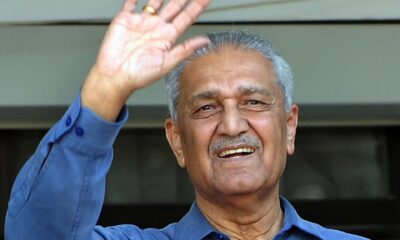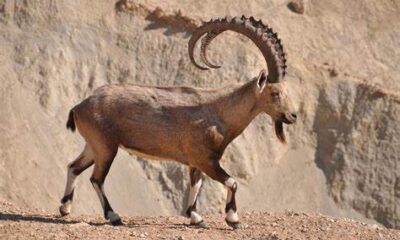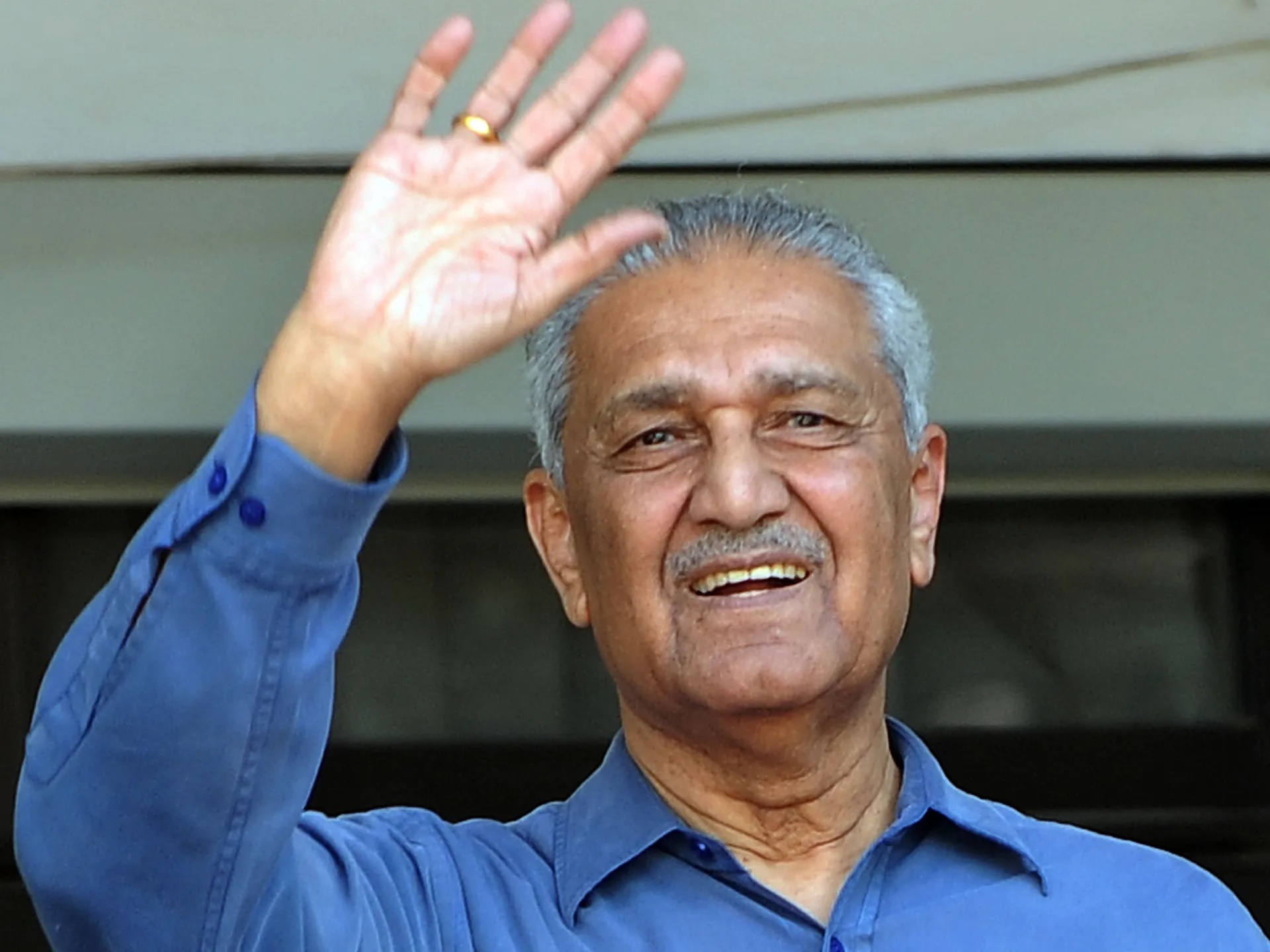Pakistan
Dig Balochistan Archeological and Unearth Civilizations
Published
2 years agoon

Balochistan is the hub of archeology. Archaeological activities in Balochistan began during British rule in the 19th century. As a result, a landscape of diverse cultural traditions was discovered. In this era of archaeological research in unearthing the cultural history of the Indo-Pak sub-continent, several renowned archaeologists, including Sir Aurel Stein (1905-43), Harold Hargreaves (1919-29), Brigadier E. J. Ross (1935-48) and Stuart Piggott (1943-50) made praiseworthy efforts. They identified various periods, cultures, and wares in many parts of Balochistan.
In the post-independence period, taking into account the cultural importance of Balochistan, more active research by archaeologists equipped with scientific procedures started, which led to new paradigms. Most of these archaeologists are affiliated with foreign missions that have not been confined to their region and carry out research in several parts of Balochistan. This allowed creating a chrono-cultural sequence of the area from the Aceramic Neolithic to the Pre-Achaemenid Period with no cultural gap.
Pirak Belongs to the Indus Valley Civilization
Pirak is an archaeological site that belongs to the Indus Valley Civilization. Around 10 km South of Sibi, between the Nari River and the road extended from Sibi to Jacobabad, stands Pirak Mound. It stretches on an area of nine hectares. It lies in the Kachi Plain, which makes a valley embayment inside the mountainous and ridged terrain amongst the Kirthar and Sulaiman Ranges. It is a large prehistoric mound near the abandoned railway station of Pirak. It is approximately 250 yds long, North to South. Its width is about 120 yds, while its maximum height is about 25 ft above the plain.
Traces of mud-brick walls are visible on the higher parts of the mound. The abundant, decorated pottery that occurs all over the mound appears to be unique. It is called the Pirak Bichrome Ware. Pirak was occupied between 1800 and 800 BC. Discovered in 1956, Sir Robert L. Raikes revisited the site in the early 1960s and made a collection of materials from its surface for further investigations.
Exploration of Pirak
Later, Pirak was excavated from the year 1968 to 1974. Due to extensive rainwater, the mud-brick structures were vividly visible back then. Pirak Mound is an archetype of a variable agricultural revolution in the post-Harappan eras. In conjunction with the settlement of Pirak, a canal was constructed, which shows a continuation of the irrigation facility in the Kachi Plain. The excavations reveal that cultivation of crops including rice, millet, and sorghum were practiced, and for the sake of transportation, the people domesticated camels, horses, and donkeys. Pirak has many round seals, sealings, and tokens with geometric patterns unearthed in a broad topographical area.
Rice was cultivated as the major crop in post-urban Pirak while oats, chickpeas, and grapes were also planted. Rice was not a random occurrence in Pirak. The several constructions employed as warehouses suggest that rice was cultivated like wheat and barley, perhaps where the latter two crops did not find an appropriate environment for growth. Analysis of the various samples collected revealed the presence, at the base of the site, of colossal sediment of rice straw about 30 – 50mm in thickness. Furthermore, the proof of rice at the Pirak site, outside the region of Ganges Valley in India, depicts the rice dispersal in early times due to the suitable conditions for rice agriculture of this region.
Moreover, the first confirmed use of horse and camel for riding is found in the latest levels of Pirak. Between 1800 to 800 BCE, elaborately decorated camel and horse figurines with riders were being produced at Pirak. Also found at Pirak are Jhukar circular seals. Since horses are associated with the Vedic culture, some scholars view Pirak as an indication for intrusive communities coming into the Indus valley from the North-West. Then again, it is notable that the figurine styles and pottery of Pirak are limited to the Kachi Plain and Balochistan and do not proliferate to other sites in the Indus Valley.
Pirak is situated on a low alluvial terrace of the Kachi plain in an area having about 4 inches annual rainfall. It must undoubtedly have been much eroded, regularly by wind and at intervals, by torrential summer thunderstorms. The discovery of plentiful Pirak bichrome shards all over the top of the mound points out that perhaps only Pirak ware and its antecedents will be discovered in the 25 feet depth of deposits remaining above ground level when the site is excavated as it seems urgent that it should be. The relatively recent exposure of Pirak levels may account for the reasonably good state of preservation of most of the surface shards.
Pirak is a preserved site in Balochistan, excavated by archaeologists, which has escaped the ravages of time. Pirak has many round seals, sealing, and tokens with geometric patterns unearthed in a broad topographical area.
Thank you Fajar Nadeem for exploring and sharing with us all this information. We appreciate your efforts and appeal to all the outstanding youths to research out this country for more beautiful facts.
You may like
-


Unity, Faith, and Discipline: The Cornerstones of Pakistan’s Motto as “Aik Qaum” (One Nation)
-


Aik Qaum: The Fusion of Integrity and Patriotism
-


“AIK QAUM” DECLARATION OF CONCEPTION
-


Dr. Abdul Qadeer Khan: The Real Hero of Pakistan
-


The Chiltan Ibex: A Rare Treasure of Balochistan
-


MANGO HEALTH BENEFITS NUTRITION
Pakistan
Unity, Faith, and Discipline: The Cornerstones of Pakistan’s Motto as “Aik Qaum” (One Nation)
Published
3 weeks agoon
May 28, 2025By
EDITOR
The guiding motto of Pakistan, “Unity, Faith, and Discipline,” holds profound significance in shaping the national identity of Pakistanis as “Aik Qaum” (One Nation). These three words, coined by the country’s founding father, Quaid-e-Azam Muhammad Ali Jinnah, form the bedrock of the national ethos. They represent the essential pillars upon which Pakistan was built and must continue to stand in pursuit of progress, solidarity, and global stature.
This motto is not just a political slogan or a patriotic catchphrase; it is an enduring call for the people of Pakistan to unite under a common banner of national purpose, to have faith in their capabilities, and to uphold the discipline needed for personal and national success. In this detailed article, we will explore the deeper meanings and implications of unity, faith, and discipline, and how these principles guide the vision of Pakistan as a united and resilient nation.
Unity: The Power of Togetherness
Unity is the first and foremost element of Pakistan’s national motto. It emphasizes the importance of national cohesion and solidarity across the diverse ethnic, linguistic, and religious landscape of Pakistan. As a nation that emerged from the crucible of colonialism and division, Pakistan’s unity has always been central to its survival and growth.
At its core, unity signifies a collective commitment to the country’s well-being, transcending personal or communal differences. Pakistan is home to a wide variety of cultures, languages, and sects, from the Punjabis, Sindhis, Pashtuns, and Baloch to religious minorities such as Christians, Hindus, and Sikhs. The concept of unity calls for embracing this diversity as a source of strength, rather than as a source of division.
Historically, the drive for unity was integral to the Pakistan Movement, which brought together Muslims from different regions of British India to fight for a common homeland. Quaid-e-Azam Muhammad Ali Jinnah recognized that only through unity could the Muslims of the subcontinent secure their political, economic, and social rights. His vision for Pakistan was one where all citizens, regardless of their background, would work together for the common good.
In modern-day Pakistan, unity remains vital for addressing the challenges of sectarianism, regionalism, and external threats. A united Pakistan is better equipped to deal with issues such as poverty, terrorism, and political instability. The concept of unity fosters a sense of belonging and national pride, urging Pakistanis to think of themselves as one people, with one purpose, under one flag.
Faith: Belief in a Higher Cause and in Ourselves
Faith is the second pillar of Pakistan’s motto and is deeply rooted in the spiritual and ideological foundation of the country. Pakistan was established as a homeland for Muslims, and faith in Islam has always been central to its identity. However, faith as a motto goes beyond mere religious belief; it encompasses a broader sense of confidence, trust, and belief in a higher cause, in the potential of the nation, and in the resilience of its people.
For Pakistan, faith is twofold: it represents both religious faith and faith in the nation’s future. Pakistanis draw strength from their spiritual beliefs, finding unity and purpose in the teachings of Islam, which emphasize justice, equality, and community welfare. This religious faith provides a moral compass for both governance and daily life, promoting values such as honesty, compassion, and responsibility.
Faith also refers to belief in Pakistan’s potential. Pakistan has faced numerous challenges since its inception in 1947, from wars and natural disasters to political turmoil and economic crises. Through it all, the faith of its people in the country’s resilience and eventual success has been unwavering. This faith in Pakistan’s ability to rise above adversity and build a better future remains a key motivator for both the government and the citizenry.
Jinnah, in his speeches, often urged Pakistanis to have faith in themselves, in their institutions, and in their destiny. He believed that faith in the country’s foundational principles would ensure its survival and prosperity. In today’s rapidly changing world, this faith is crucial in fostering optimism, innovation, and national pride among Pakistanis.
Discipline: The Key to Progress and Stability
The third and final element of Pakistan’s national motto is discipline, a principle that Jinnah regarded as essential for the development of a strong, stable, and successful nation. Discipline is the cornerstone of order, efficiency, and progress. It demands that citizens and leaders alike act with responsibility, accountability, and foresight.
For Pakistan to achieve its full potential, discipline is required at both the individual and institutional levels. On a personal level, discipline involves hard work, ethical behavior, and adherence to the rule of law. It requires Pakistanis to be diligent in their pursuits, whether in education, work, or civic duties, and to prioritize the common good over personal gain.
On a broader scale, national discipline means the effective functioning of the state, including the proper management of resources, the upholding of justice, and the fair enforcement of laws. A disciplined nation adheres to democratic values, maintains the integrity of its institutions, and operates with transparency and accountability. Discipline ensures that the country can handle crises, avoid corruption, and build a sustainable economy.
Jinnah himself was a model of discipline. His dedication to the cause of Pakistan, his meticulous planning, and his unwavering commitment to the principles of justice and fairness were key factors in the success of the Pakistan Movement. He emphasized that without discipline, a nation could not stand firm, nor could it achieve its desired goals.
Today, Pakistan faces numerous challenges that require discipline in governance, education, healthcare, and defense. The globalized world presents both opportunities and obstacles, and only through disciplined efforts can Pakistan compete on the world stage. Whether in fighting corruption, strengthening institutions, or promoting social cohesion, discipline remains a critical factor in Pakistan’s progress.
The Relevance of “Unity, Faith, and Discipline” in Modern Pakistan
As Pakistan navigates the 21st century, the principles of unity, faith, and discipline are more relevant than ever. These values are not just historical legacies but are guiding principles for Pakistan’s future as a vibrant, resilient, and prosperous nation. In an era of rapid globalization, technological advancement, and shifting political dynamics, these ideals provide a steady framework for national development and collective progress.
- Unity is vital for overcoming internal divisions and presenting a strong, cohesive front on the international stage.
- Faith continues to be a source of strength, providing hope, moral guidance, and belief in the country’s bright future.
- Discipline is crucial for tackling corruption, ensuring effective governance, and building a strong economy capable of competing globally.
In conclusion, “Unity, Faith, and Discipline” remains the heart of the Pakistani identity as “Aik Qaum” (One Nation). It encapsulates the aspirations of a people who, despite facing numerous challenges, remain committed to the vision of a united, just, and prosperous Pakistan. These principles, when embraced and practiced by all Pakistanis, have the power to shape a future that honors the past while paving the way for new achievements on the world stage.
Article
Aik Qaum: The Fusion of Integrity and Patriotism
Published
3 weeks agoon
May 28, 2025By
EDITOR
We keep Integrity closest to our Heart and Patriotism on top of our mind.
Integrity and patriotism are not separate entities; they are intertwined in the soul of Pakistan. The people understand that to be a patriot is to uphold the principles of integrity. Honesty and love for one’s country are two sides of the same coin. Together, these values form the essence of “Aik Qaum.”
The fusion of integrity and patriotism is evident in the everyday lives of Pakistanis. It’s in the farmer toiling the fields, the teacher educating the youth, and the soldier guarding the borders. It’s in the child who dreams of a better Pakistan and the elderly who have seen the nation grow. “Aik Qaum” is the realization that integrity and patriotism are the heart and mind of Pakistan, beating in unison to guide the nation forward.
As we celebrate the spirit of “Aik Qaum,” we honor the values that make Pakistan a unique and resilient nation. Integrity and patriotism serve as our guiding stars, leading us towards a brighter and more prosperous future. In the heart of every Pakistani and at the forefront of their minds, “Aik Qaum” stands as a testament to the strength of a united nation, bound by the principles of integrity and the unyielding love for their homeland.
In Pakistan, “Aik Qaum” is not just a motto; it’s a way of life that embodies the enduring spirit of a proud and united nation.
Pakistan
Dr. Abdul Qadeer Khan: The Real Hero of Pakistan
Published
1 month agoon
May 10, 2025By
EDITOR
Dr. Abdul Qadeer Khan, affectionately known as A.Q. Khan, is widely celebrated as the “Father of Pakistan’s Nuclear Program.” His contributions to science and defense not only elevated Pakistan to a new level of self-reliance but also safeguarded the nation’s sovereignty in a volatile region. For many Pakistanis, Dr. Khan is more than a scientist—he is a national hero whose legacy of patriotism, brilliance, and resilience continues to inspire generations.
Early Life and Education
Dr. Abdul Qadeer Khan was born on April 1, 1936, in Bhopal, India. In the aftermath of the partition in 1947, his family migrated to Pakistan. After completing his early education, Khan pursued higher studies in Europe, earning a degree in metallurgy from the Netherlands and later, a doctorate in metallurgical engineering from Belgium.
His education in Europe allowed him to work with some of the most advanced technology of the time. He gained valuable experience working at a European uranium enrichment facility, where he learned the intricacies of centrifuge technology—a technology that would play a pivotal role in his future efforts to develop Pakistan’s nuclear capabilities.
Contribution to Pakistan’s Nuclear Program
In the early 1970s, following Pakistan’s defeat in the 1971 war and India’s successful nuclear test in 1974, the need for Pakistan to develop its nuclear deterrent became urgent. It was at this crucial juncture that Dr. A.Q. Khan offered his services to the government of Pakistan.
Khan’s return to Pakistan marked the beginning of a transformative era in the country’s defense strategy. He was given charge of the Kahuta Research Laboratories (now called Khan Research Laboratories), where he spearheaded Pakistan’s uranium enrichment efforts. Despite limited resources and immense international pressure, Dr. Khan and his team achieved remarkable success. Under his leadership, Pakistan conducted its first successful nuclear test on May 28, 1998, in response to India’s earlier tests, making it the first Muslim-majority country to possess nuclear weapons.
Safeguarding Pakistan’s Sovereignty
Dr. Khan’s role in the successful development of nuclear technology is widely regarded as a crucial factor in maintaining Pakistan’s security and sovereignty. His work ensured that Pakistan had a credible deterrent against external aggression, particularly in light of the hostile relations with its neighbor, India.
The achievement not only bolstered Pakistan’s standing in the global community but also instilled a sense of pride and security within the nation. For many, Dr. Khan became a symbol of national pride, courage, and determination in the face of adversity.
National Hero and Legacy
Dr. Abdul Qadeer Khan passed away on October 10, 2021, leaving behind a legacy that will forever be etched in the history of Pakistan. His funeral was attended by thousands, including political leaders, military officials, and citizens from all walks of life. He was laid to rest with full state honors, a testament to the nation’s deep respect and gratitude for his services.
Dr. Khan’s work ensured that Pakistan remained secure in an unpredictable geopolitical landscape. His contributions to science and defense transformed the country, empowering it with a nuclear deterrent that still serves as a cornerstone of its defense strategy today.
Dr. Abdul Qadeer Khan will always be remembered as a visionary who dedicated his life to serving Pakistan. His brilliance as a scientist, his unwavering commitment to his country, and his determination to see Pakistan rise as a strong, independent nation make him a true national hero. His legacy is a reminder that through perseverance, knowledge, and love for one’s country, even the most daunting challenges can be overcome. Dr. Abdul Qadeer Khan will forever remain the “Real Hero of Pakistan.”

Unity, Faith, and Discipline: The Cornerstones of Pakistan’s Motto as “Aik Qaum” (One Nation)

Aik Qaum: The Fusion of Integrity and Patriotism








